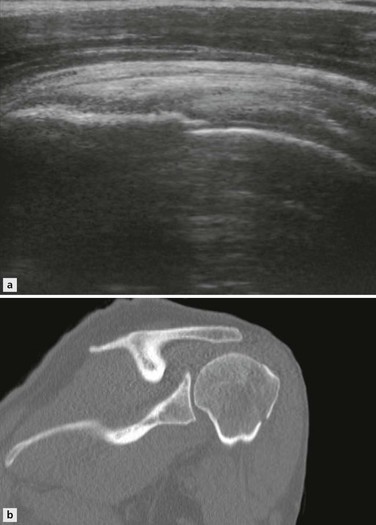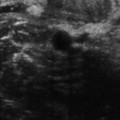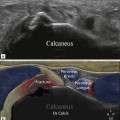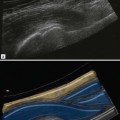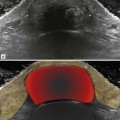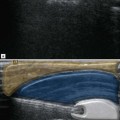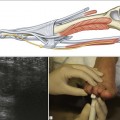Shoulder 3
Beyond the Rotator Cuff
Bone Disease Around the Shoulder
Greater Tuberosity Fracture
Fractures of the greater tuberosity are more easily detected by ultrasound than plain films (Fig. 4.1). They are a common cause of persistent shoulder pain following a fall on the outstretched hand where plain films have been considered to be normal. These avulsion fractures may involve the supraspinatus insertion on the greater tubersosity or, less often, the subscapularis insertion on the lesser tuberosity. Ultrasound demonstrates a cortical break associated with focal tenderness. The degree of displacement can be assessed with reasonable reliability, although not as accurately as with a CT scan. This is usually between 1 and 8 mm displacement, with larger displacements more significant as they may precipitate or accentuate subacromial impingement. It is also helpful to give an indication of the proportion of the supraspinatus footprint that is attached to the fracture fragment.
Supraspinatus Footprint Lesions
Bony irregularity is not infrequently identified at the supraspinatus insertion. The cause is not known with certainty. It may begin with traction enthesopathy, but secondary fluid ingress may enlarge the bony defect that can become quite large in some patients. The presence of bony regularity does not always indicate a supraspinatus tear; however, apart from acute tears, it is unusual to encounter a significant supraspinatus lesion where the underlying bone is completely normal.
Hill–Sachs Lesion
Bony abnormalities on the posterior aspect of the humeral head could be due to previous anterior dislocation. The typical Hill–Sachs lesion is due to an impaction of the posterolateral aspect of the humeral head against the anterior glenoid margin (Fig. 4.2). In addition to detection, the size of the defect should be assessed and particularly whether there is any likelihood of it becoming locked against the posterior glenoid margin during external rotation. Large lesions may influence surgical decisions. Measurement of the distance between the bony margins and the depths of the lesion can be provided with ease during a routine ultrasound examination. It is also helpful to assess the position of the Hill–Sachs lesion with respect to the posterior glenoid margin during external rotation, though patients with recurrent dislocation may be apprehensive during the manoeuvre. This is to determine whether there is the potential to reengage at physiological external rotation angles. In large lesions and lesions where there is the potential to engage, additional anterior capsule tightening may be carried out at surgery.
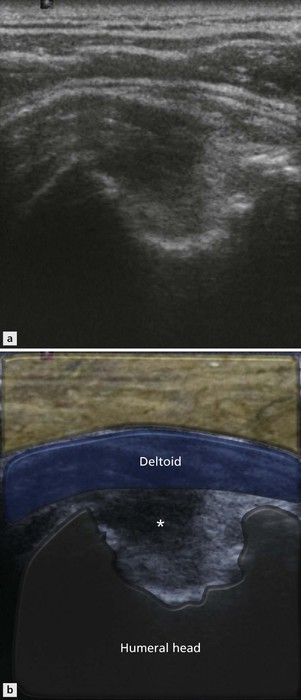
Figure 4.2 Axial image over the posterior shoulder. A large Hill–Sachs defect is present in the humeral head (*). Dynamic assessment should follow detection of this lesion to see whether the defect engages with the posterior glenoid. The dimensions of the lesion can also be reported to assist with surgical decisions.
Posterosuperior Impingement
A less common cause of a posterolateral bony injury is posterosuperior impingement. This is where the posterosuperior aspect of the humeral head may impinge against the posterosuperior labrum. This is most commonly seen in throwing sports but can also occur in tennis during the serve. There is some role for using ultrasound in patients with posterosuperior impingement, though it is recognized that a complete evaluation of the glenoid labrum is not possible in many patients. The position of the humeral head and glenoid margin can be assessed during a simulated throwing manoeuvre. Bony irregularity of the humeral head that comes into contact with the glenoid during the cocking phase is suggestive of posterosuperior impingement. Vascular channels may also cause bony irregularities and these are generally quite small and in a different location. Injuries to the labrum are discussed in the next section.
